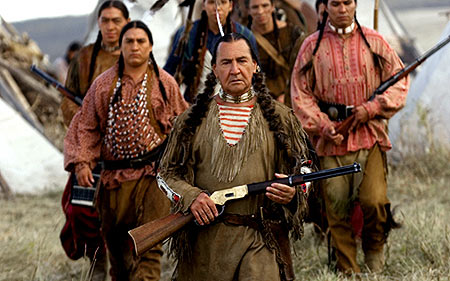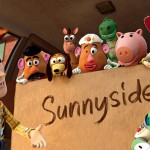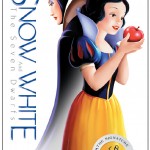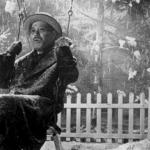Bury My Heart at Wounded Knee was one of the books of my young adolescence: everyone had to read it and everyone had an opinion about it. Published in 1970 to great popular acclaim (it was a best-seller for more than a year) and mixed critical reviews, to the idealistic and rebellious young this book encapsulated everything we rejected about what we then termed “the establishment.” Here was the story of American imperialism told from the point of view of the conquered (although filtered through the mind of Dee Brown, a White historian) and that story was about as ugly as it could be. Lies, broken treaties, land grabs, massacres, but most of all the expression of raw power in the service of a culture which could not see the value of any belief or way of life other than its own.
So of course I was interested to see how such a book could be turned into a movie. As it turns out we still don’t know because the HBO movie which bears the same title really isn’t an adaptation of Brown’s book. It incorporates some of the information from Brown but plays fast and loose with the facts in the service of creating a traditionally-constructed feature film. It also deals with a much more limited time period, basically from the Battle of the Little Big Horn (1876) to the Massacre at Wounded Knee (1890).
What Bury My Heart at Wounded Knee is, really, is an old-fashioned Hollywood-style historical epic with first-rate production values, a high-powered cast and a script full of high-toned dialogue (nearly everything sounds like a quotation) and teaching moments so blatant you should be cautious of consuming liquids while watching lest you perform an involuntary spit-take.
The way to make history interesting to people, in the Hollywood playbook, is to create characters who embody differing points of view and have them interact in a series of set-pieces interspersed with impressive visuals with bits of historical information salted in here and there to make it seem educational. And if you take this as your context you can have a good time watching Bury My Heart (I certainly did). Just don’t confuse it with real history.
Don’t expect much depth of characterization either. When roles are written to embody points of view there’s not much chance for the actors to get beneath the surface (and if they did it would only impede the grand historical sweep which is the real point of the movie). It’s telling that this film won six Emmys but none of them were for acting: besides Best Movie it won for cinematography, camera editing, sound editing, sound mixing and makeup. But once again if you trim your expectations in the direction of what the film is, rather than what you may wish it to be, there’s a lot to enjoy.
The main characters in Bury My Heart are Henry Dawes (Aidan Quinn), Charles Eastman (Adam Beach) and Sitting Bull (August Schellenberg). All are based on real historical people although in the case of Eastman in particular fact frequently gives way to fiction in the service of telling a good story. Dawes is a Senator from Massachusetts and head of the Dawes Commission who believes he’s doing the right thing by the Indians by destroying their culture which will hasten their assimilation into mainstream, White society. Sitting Bull is the unassimilated Native American who refuses to consent to government machinations intended to destroy their traditional way of life. Eastman, who in reality had little to do with much of what is portrayed in this film, represents the assimilated Indian (contemporary sources would probably have said “civilized”) who graduated from medical school and married a White woman, Elaine Goodale (Anna Paquin).
Much of the film involves government attempts to take more of the Indians’ land (gold has been discovered in the Black Hills) and to force them to abandon their collectivist culture by introducing private ownership of land. The fact that the land which they will “own” is close to worthless is not lost on Eastman who grows steadily more uncomfortable with his role as the poster child for assimilation: at one point he asks Dawes how many of the reservation Indians he thinks will have a fraction of the opportunities that he has enjoyed.
One unexpected benefit of the artificial nature of much of the dialogue is that it lays bare some interesting ethical and philosophical issues. This is not a “Red man good, White man bad” film (there’s plenty of imperfection to go around) nor does it dwell unduly on mythical images of the noble Indian. As Colonel Nelson Miles (Shaun Johnston) says to Sitting Bull at one point, the Sioux “didn’t sprout from the plains like spring grass” but took the land by force, just as the Whites are now doing to them. In another telling moment Eastman’s father ships him off to boarding school with the advice that “The earth belongs to the white man. There is no future outside his world.”
In other words, Realpolitik is the name of the game and when you’re on the wrong side of the balance of power it might be good to start by recognizing that fact–it sure beats being a pitiful victim. I’m not endorsing either point of view, by the way, but I’m glad they’re included because a film which was nothing but one long lament would be really, really boring. Besides, many of the issues raised in Bury My Heart are relevant to the present day, from the wars in Iraq and Afghanistan to the ongoing conflict in the Middle East.
The 2-DVD set of Bury My Heart at Wounded Knee comes with a strong package of extras. Most useful are two feature commentaries, one by director Ives Simoneau and one with Adam Beach and Aidan Quinn. There’s also an “Interactive Historical Guide” feature you can turn on which links real historical information to the film: while you’re watching the film, a feather icon appears on the screen whenever there’s a relevant factoid to access. The second disc is a bit leaner, offering a production diary (12 minutes), two featurettes (6 minutes and 3 minutes) and a photo gallery.
*******************************
Sarah Boslaugh is a freelance writer and editor as well as an instructor at the Washington University School of Medicine in St. Louis, Missouri. She has four books in print(the most popular is Statistics in a Nutshell, published by O’Reilly) and is a regular contributor to playbackstl.com and popmatters.com.













